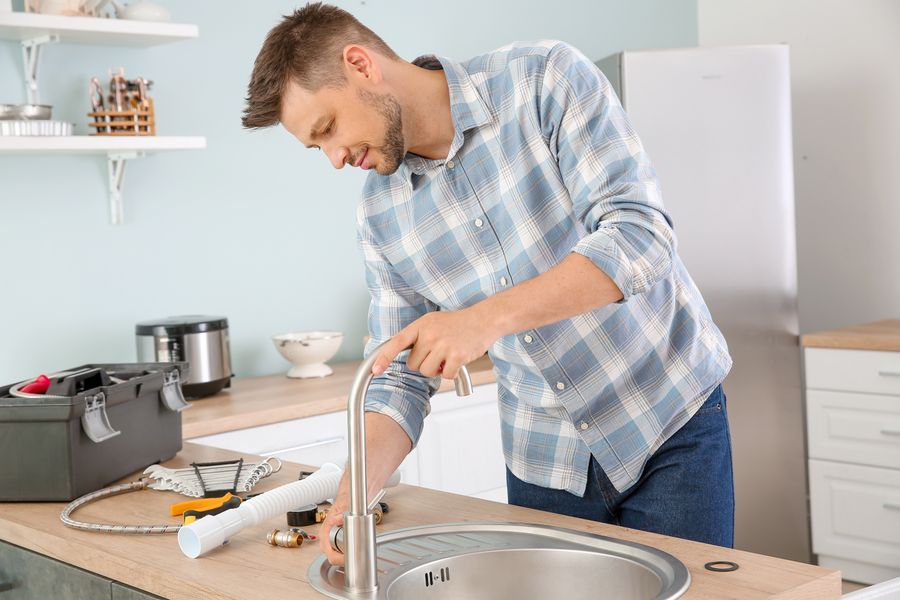Plumbing is something that not many people pay attention to unless they notice a burst pipe, running toilet, or dripping faucet. Plumbing problems can happen anytime, without warning. You could be in the middle of a good meal when a pipe decides to burst, or you may be rushing off to work when the shower suddenly stops working. In the middle of the winter season, your water heater may start having issues, and these issues never have easy, quick fixes.
The key to proper plumbing management is knowing what warning signs to look out for. You don't have to be an expert or professional plumber; you only have to know what you need to pay attention to and what to do when something happens.
The ability to identify common plumbing problems will also help you determine which repairs you can do and which ones will need the expertise of a plumber.
5 Plumbing Issues You Should Pay Attention To
1. Your pipes are leaking.
Pipe leaks may sound simple, but they can become bigger problems if not afforded the right attention and repaired right away. Leaks can lead to dampness, mold, furniture damage, and in some cases, bug infestations. You cannot take leaks for granted, especially during the winter, when leaks are most common.
Here are things that you can do to fix leaking pipes:
- First off, you have to identify the cause of the problem. Why is your pipe leaking? Some common reasons include high water pressure, shifting, and deterioration.
- Choose the option that offers a long-term solution. Once you’ve identified the root cause, you have to determine if it’s a simple pipe leak or it needs the skills and experience of a plumber. If the leak is too big already, covering it with a sealant won’t do the job. If there is a lot of moisture and mold around the area, the problem may be too big already.
- The best thing to do to fix a leak is to have the pipe replaced.
2. Your toilet runs.
No one wants to deal with a running toilet. Aside from the inconvenience, they also waste a lot of water, which can get very expensive. So once you notice that your flush has stopped working properly, you’ll need to determine what’s stopping the items from moving through the toilet pipes. Did somebody try to flush a tissue or other item that didn’t completely dissolve?
Your first weapon for fixing running toilets is the plunger. Position the plunger over the drain and allow it to suction off whatever clump is causing the blockage. You can also pour a liquid drain cleaner into the bowl or use a plumbing snake if this doesn't work.
Related: How to unclog a toilet at home. Tips for landlords.
3. Your faucet is leaking.
Leaking faucets can be just as big a problem as pipe leaks if they are not repaired right away. The usual reason that a faucet drips is a dislodged, stiffened, or worn-out internal washer. All you have to do to correct this issue is replace the washer. You can choose to DIY this, or you can ask your plumber to help you out.
4. Your water heater is not working properly.
Water heater issues are common and quite easy to identify. When you're about to shower and turn on the heater, but the water is still freezing, your water heater is definitely screaming for attention. Other signs to look for include water discoloration, water heater noises, and puddles of water.
The first thing you need to do is ensure that the temperature on your water heater is set correctly. If it is turned down, then you won’t get any hot water. Making sure it is switched on is also important if your water heater is gas-powered. The pilot light has to be turned on for the heater to work.
Mineral deposits may also cause water heater problems, so you’ll also want to check the water tank. If you see sediments, you’ll need to flush everything out right away.
If you find pools of water on the shower floor, it could point to a bigger problem that requires professional help. No matter how confident you are, don’t try replacing a water tank on your own.
5. Your pipes burst.
When a pipe bursts it’s immediately obvious. Bursting pipes indicate that they are frozen. To ensure that this won't happen, make sure to wrap your pipes with insulation.
Another idea is to let your faucets with exposed pipes run or drip out during the cold season. You can schedule a time for doing this. Water that moves won’t easily freeze.
Knowing how to spot plumbing problems and fix them is important, but you also have to have the right tools and supplies. So find time to stock up on appropriate supplies – you can ask your plumber for advice on which tools you should have. Lastly, it is also essential to acknowledge what you can do on your own and when you need your professional plumber's skills, expertise, and experience.
About the author
Rachel Watson is the Senior Content Editor of Precision Air & Plumbing, a full-service HVAC, plumbing, and home performance contractor operating in Chandler, Arizona. Rachel enjoys yoga and writing articles about how to make home living more energy-efficient and environmentally friendly.
Though some DIY projects are easy to complete, for others, there are repairs that require professional skills and specific equipment. If you’re unsure whether or not you can handle a maintenance request in your rental property, find a service professional in your area by posting a bid request.
Please note that the option is available for maintenance requests in a “new” status only.
Check out the Help Center article to get step by step instructions:
How can I find a service professional within the system?
Related:
Cleaning the inside of the dishwasher by yourself. Tips for landlords.






